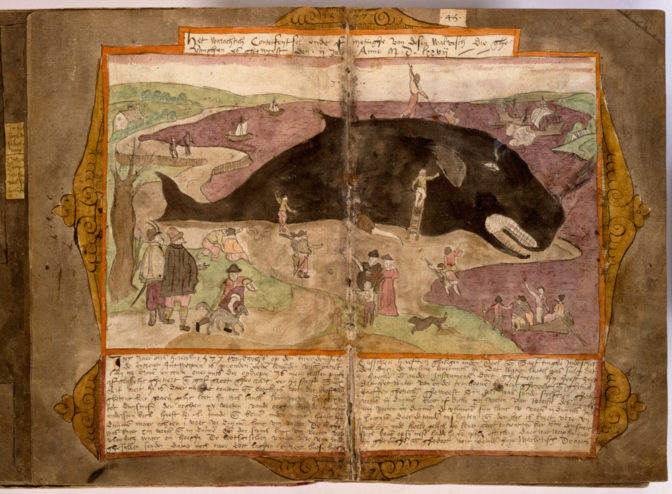Walvisvaart is whaling.
Dutch commercial whaling started in the 1600s. Many skippers from the province of Holland went north to the waters around Scandinavia and north of Russia to catch giant whales. The village of De Rijp had a thriving whaling industry and at one time had a fleet of ten whaling ships.
The whale fat was turned into codfish oil, used for a wide range of purposes including lamp oil or as ingredient for soaps and paints. Whale bones were used to make glue or as building material for dikes. Baleens were used as crafting material or to line corsets.
Due to overfishing, the importance of the whale industry declined over time. By 1873, the Netherlands no longer had any whaling ships.

Beached whale, 1577. Credits: Koninklijke Bibliotheek, Wikimedia Commons (public domain)
“Geschiedenis van de Nederlandse visserij en walvisvaart,” Wikipedia (https://nl.wikipedia.org/wiki/Geschiedenis_van_de_Nederlandse_visserij_en_walvisvaart : version 11 February 2016 23:35).

